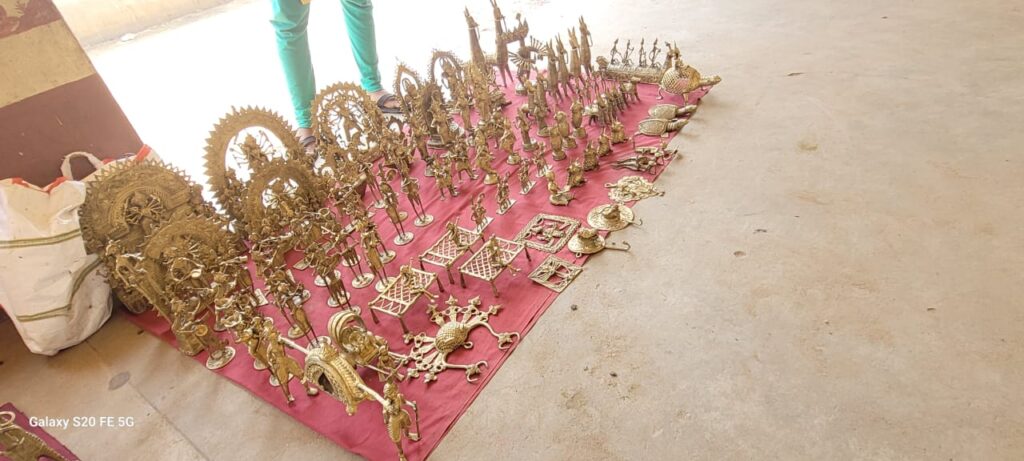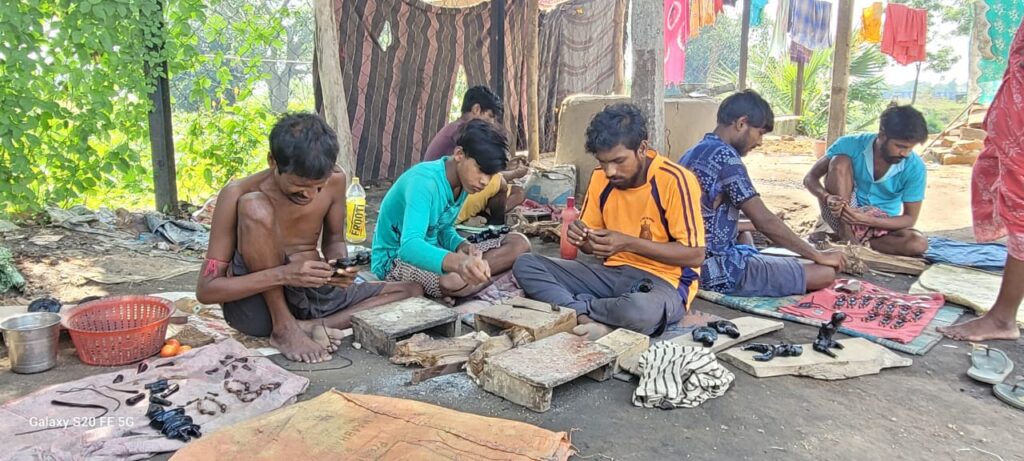Located in the heart of West Bengal, Shantiniketan is not only known for its lush green landscapes and Tagore legacy, but also for the rich cultural heritage it protects. One of the village communities near Shantiniketan, known as Dokra village, boasts of a tradition of creating exquisite Dokra art that has been passed down from generation to generation. MG Social Care Team’s visit to this village was an enlightening experience that gave them an opportunity to learn about this unique art form, interact with artisans and understand the growth prospects of this remarkable art.
Dokra village is located just a few km from Shantiniketan. It is a small village famous for its Dokra art. Dokra art is a traditional metal casting technique that has been practiced for over 4000 years. The people living in Dokra village are mostly tribal artisans who devote their lives to the preservation and propagation of this ancient art.
The art of Dokra is based on the use of nonferrous metals such as brass and bronze. The artisans make a clay model, cover it with wax, add details, encase it in clay, melt the wax, and pour molten metal into the mold. The end result is a beautiful, unique piece of art. The designs are often based on rural life, animals and deities, and more.

An engaging experience was had by the MG SocialCare Team during their visit to Dokra Village. When they arrived, the villagers welcomed them with open arms and were ready to share their culture through art and storytelling. The team was taken to the houses and workplaces of the artisans where they had a close-up look at the complex dokra-making procedure.
The Pradhan of the village, Shubho karmakar explained, “Our craft has been passed down from one generation to the other. We take extreme pride in our work, and our hope is that our Dokra Art continues to be appreciated and passed on”.
The team also got to meet the chief of the artisans, Ramu Karmakar who has also been the proud recipient of President Award for Dokra Art. A simple man, aged 57 years, father of the pradhan, showed the process of Dokra art making intricately. The MG SocialCare team was moved by the craftsman’s talent and commitment, as well as by the sense of community the village people displayed.

The trip to Dokra Village showed us the difficulties and possibilities that await the artisans and their work. While Dokra art is praised for its originality, it faces a number of obstacles when it comes to technology, market access, and the sustainability of the craftsmen’ lives.
Market Access: Local visitors and a select group of art collectors from abroad have always been the main consumers of Dokra art. The craftsmen can experience a big increase in income if the market is opened up to a larger audience and e-commerce opportunities are opened up.
Technology Integration: Adding contemporary technologies and methods to the conventional process can help increase productivity without reducing the level of artistic quality. This might be possible by partnerships with govt institutions and organizations.
Skill Training: Though the artisans are experts in their art, the art form can be adaptable to changing tastes by providing the artisans with advanced skill training to help them develop their abilities and expose them to new design trends.
Sustainable Livelihoods: Promoting programs for fair pay and working conditions is crucial to ensuring that artisans may continue to use their skills without suffering financial obstacles.
Cultural Preservation: It’s important to promote knowledge transmission within families and communities if we want to keep the Dokra art tradition alive.
Dokra Village’s visit to MG Social Care was a remarkable experience that highlighted the need to preserve and promote traditional art forms, such as Dokra, in the modern era. The interactions with the artisans and the knowledge gained from the visit have opened new doors for collaboration and assistance, offering hope for the future development of this ancient art form. By tackling the issues and seizing the opportunities, the village can look to the future, where Dokra’s legacy of art will endure and flourish.
©2024 MG SocialCare Foundation All Rights Reserved